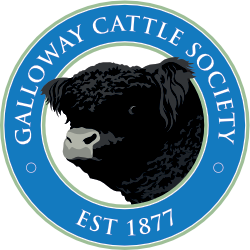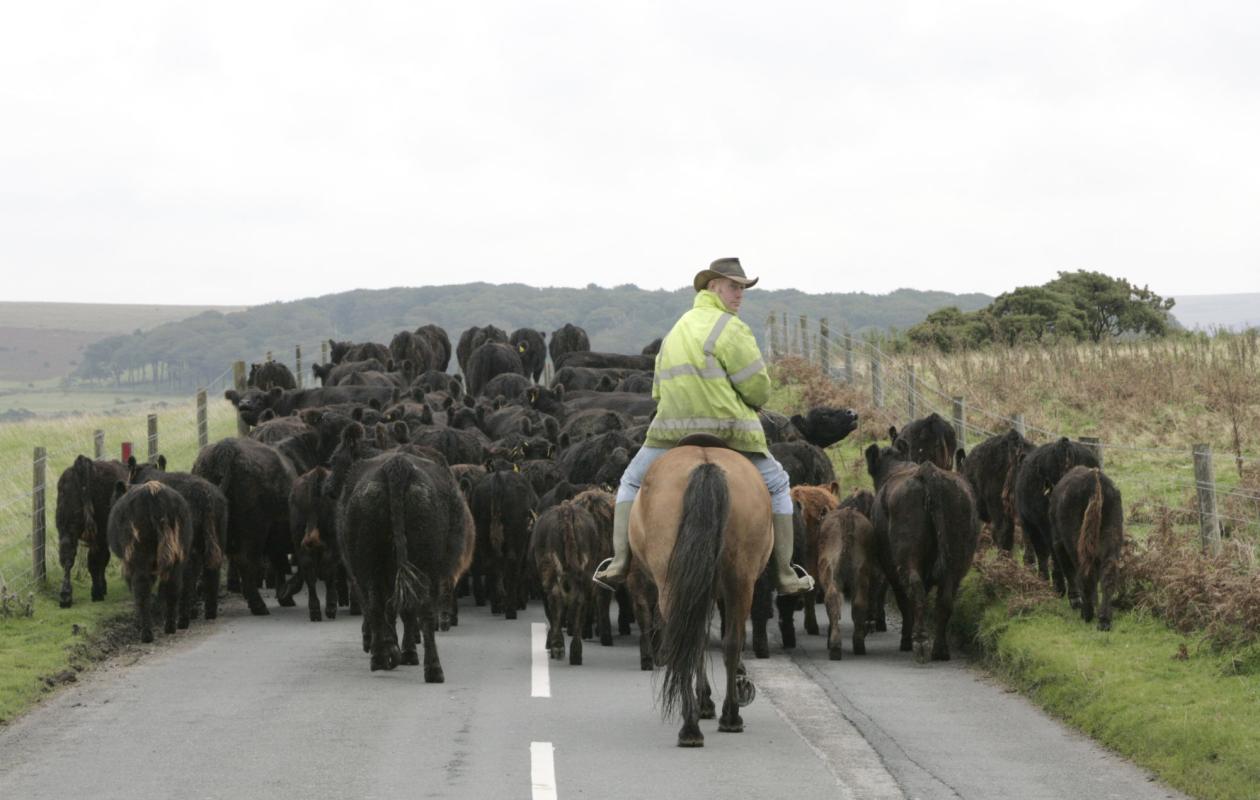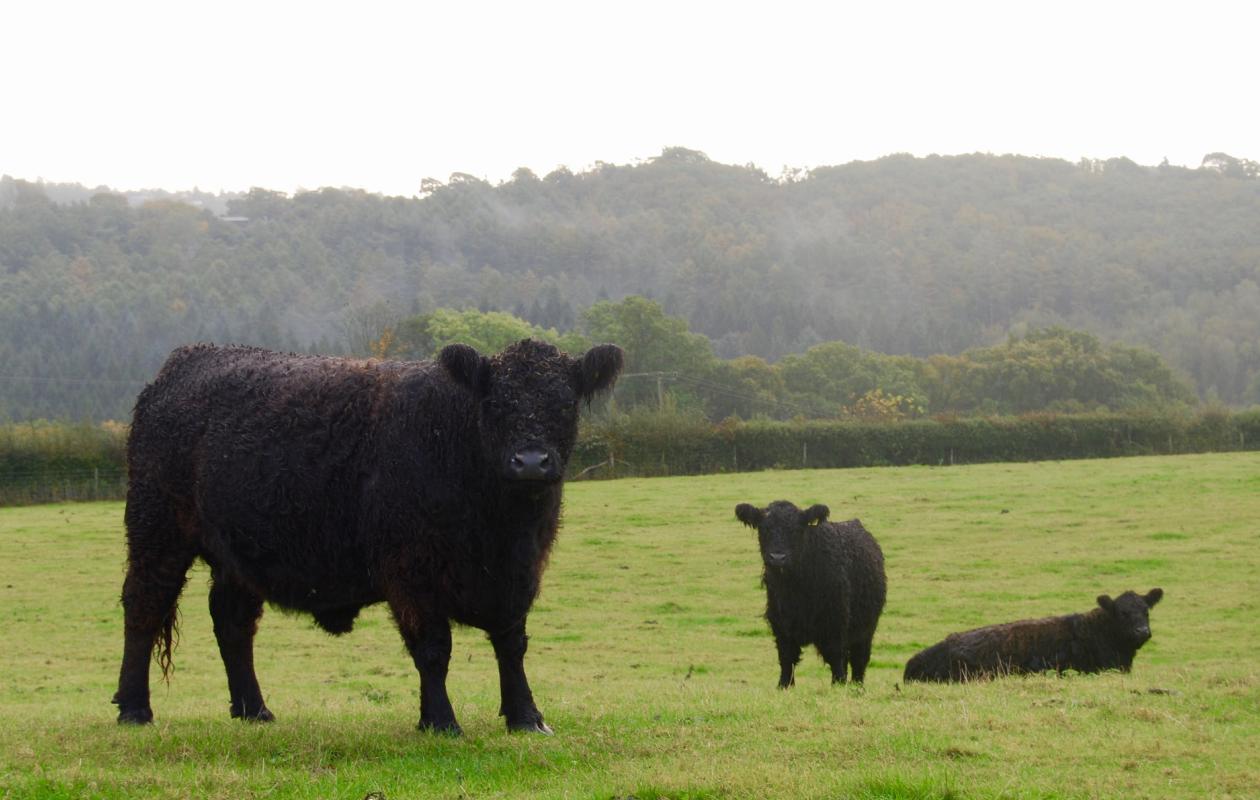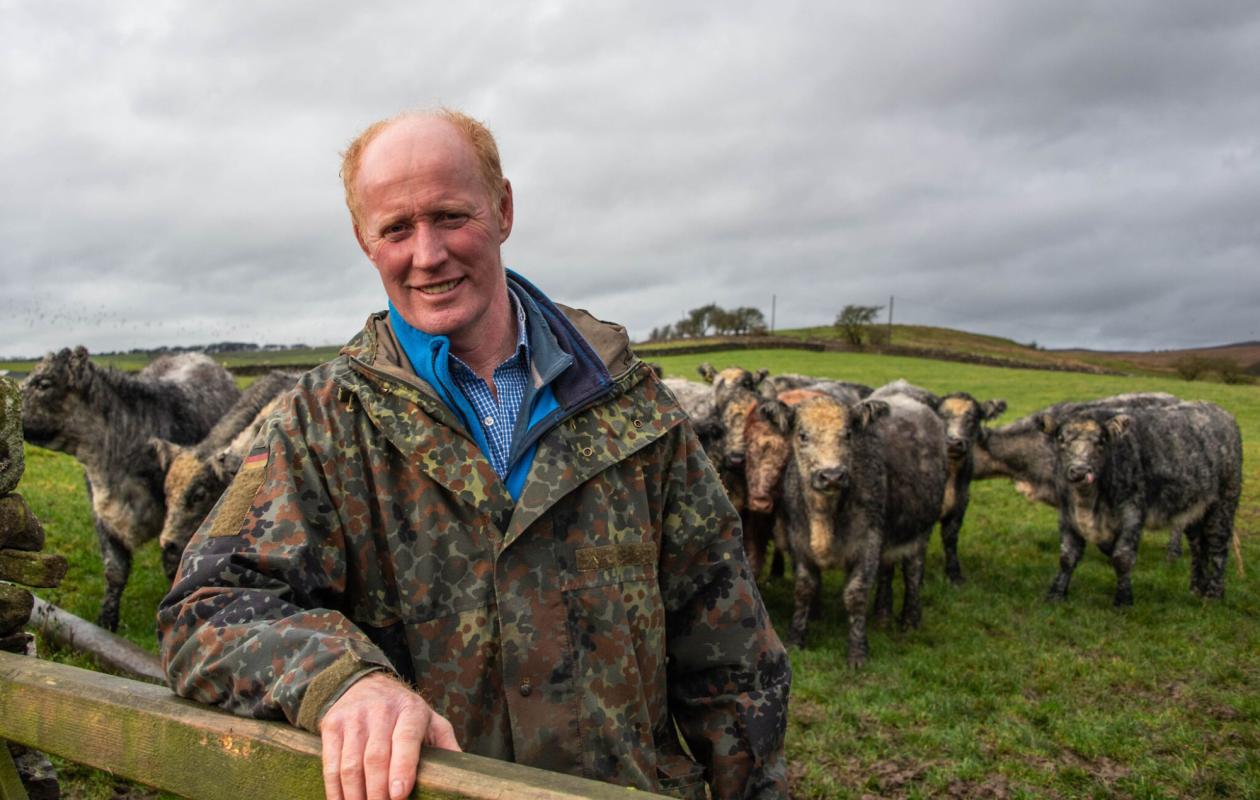Traditional Galloway cattle have played an important lifelong role for hill farmer Stewart McIntosh and he has no intention of changing that.
When Stewart and his wife Katherine took on the tenancy of the hill/upland farm Borthwickshiels near Hawick in 2018 they brought their Huntly herd of Galloways with long-established bloodlines to run alongside their flock of Lanark type Blackfaces and the farm’s flock of Hill type North Country Cheviots which they took on.
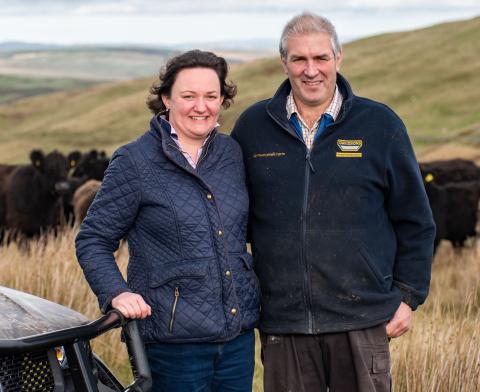
The low-input herd numbers 100 pure bred Galloway cows which live outside year round and calve on the hill at up to 1,300ft above sea level, as well as followers and Beef Shorthorn cross Galloway calves and steers.
Stewart and Katherine farm 2,345 acres of rented ground at Borthwickshiels on an MLDT tenancy in the Borthwick Valley near Roberton plus a further 140 owned acres at nearby Ashkirk. Their daughters, Grace, six, and Sarah, three are already sharing their parents’ keen interest in farming.
Despite the ground running from 900ft to 1,300ft on the hill, the farm is self sufficient in winter fodder making around 1,500 big bales of silage a year.
The Galloway breeding goes back to 1948 when Stewart’s great uncle Sandy Coltherd bought five heifers from the Glenkinnon herd of Michael Glendinning, of Williamhope, near Selkirk.
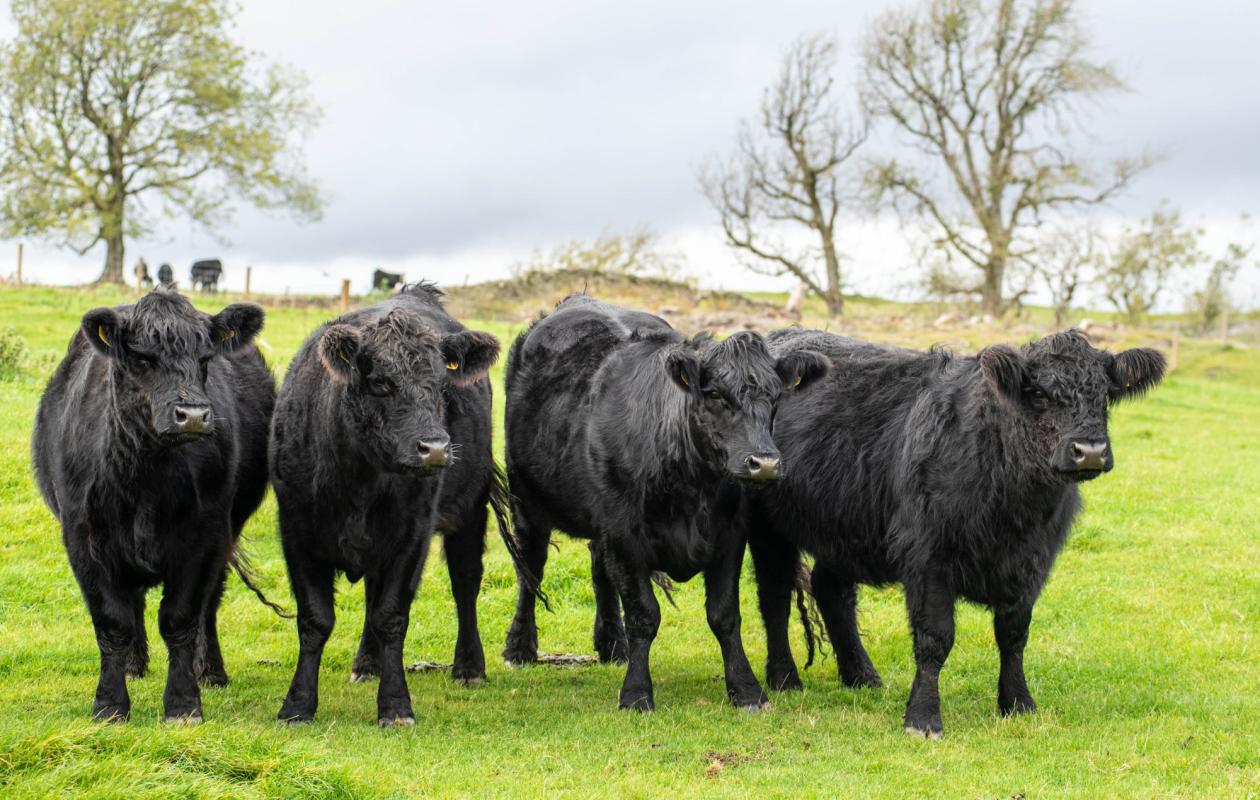
Since then the herd was run by Stewart’s late father and past Galloway Cattle Society chairman, Robert, in Northumberland and then at Outer Huntly, Selkirk from 1978, until its move to Borthwickshiels following a change of policy on the tenanted farm.
“We’re running hill cows on a hill farm and they work well alongside our sheep system managing the land and the grazing,” said Stewart. “Our system is low input and not as labour intensive but still leaving a workable Gross margin. Other breeds of cattle on this farm would be standing by the gate but the Galloways are happiest outside on the hill and they thrive there.”
“The Galloway system works well. They are ticking all the boxes we want them to.”
Katherine added: “The Galloway system works well. They are ticking all the boxes we want them to.”
The herd is spring and autumn calving and the cows are split into four groups.
Thirty of the herd’s best females will calve in the spring to one of the dearest Galloway bulls for some time, Kirkstead Commander, bought by the McIntoshs at 14 months of age for 16,000gns at the February 2020 Castle Douglas society sale.
The junior champion on the day, Commander is by Troloss Impeccable and out of a Ronaldo of Fingland daughter Kirkstead Nancy X7, and the investment backed up the McIntoshs’ quest to breed good female stock, whether cattle or sheep.
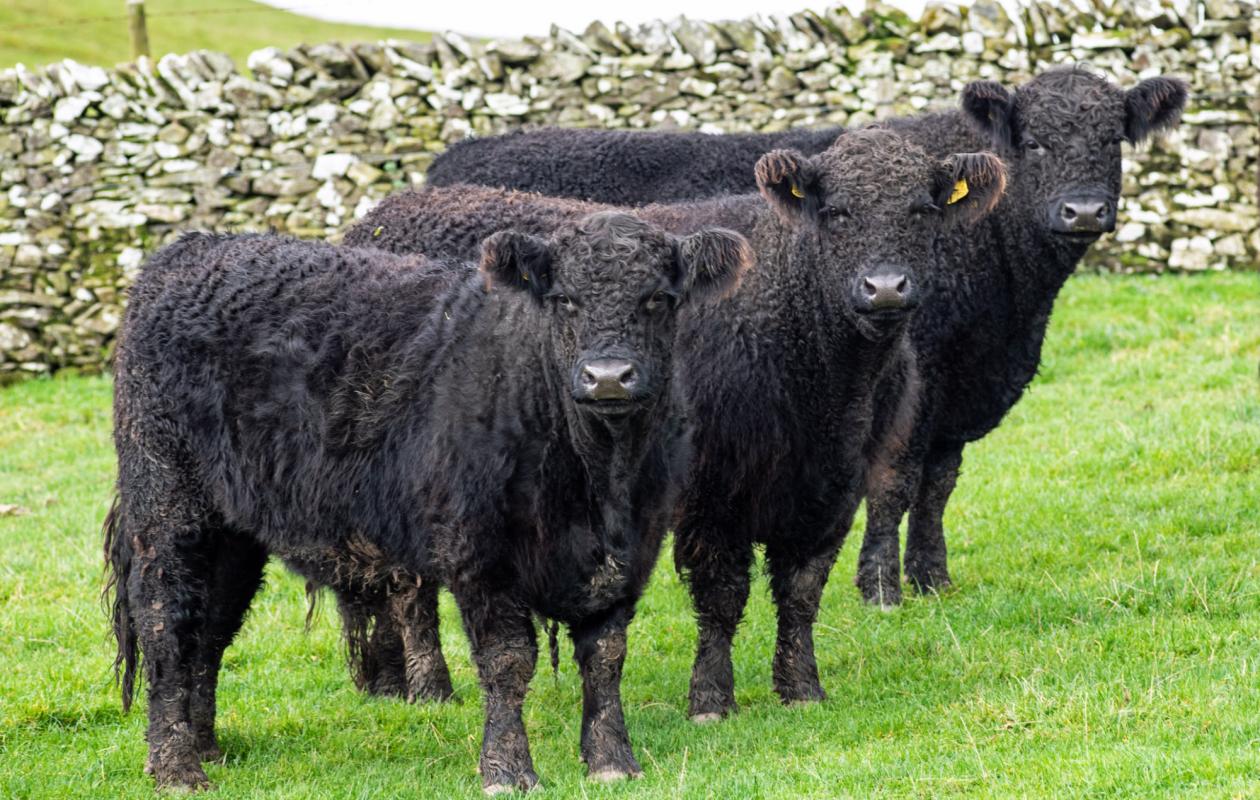
All the Galloway cattle’s bloodlines go back to the original herd and all the females are home-bred.
Galloway bulls which have left their mark on the herd over recent years include Blackcraig Kodiak, who was bought by Stewart as an older bull, Grange Rambler, Penninghame Great Escape, Ben Lomond Avatar and the German-bred Holsten Reiver.
Huntly Aviator a son of Kodiak was sold at Castle Douglas in 2016 for 3000gns.
The Galloway maiden heifers were bulled with Kirkstead Vindicator this year before Stewart decides which of the groups they will join.
A further 30 of the spring calving cows are bred to the Beef Shorthorn bull and Stewart has been breeding these crossbreds for the last 15 years to meet the demanfor heifers sold for breeding and finished bullocks.
The females are sold as 3 year old heifers with Aberdeen Angus cross calves at foot.
In June 2022, the Borthwickshiels annual consignment of a Shorthorn cross females with Angus calves at foot topped at £2,020 with a further two at £2,000 to average £1,625.71 when sold through Longtown mart’s special sale of breeding cattle.
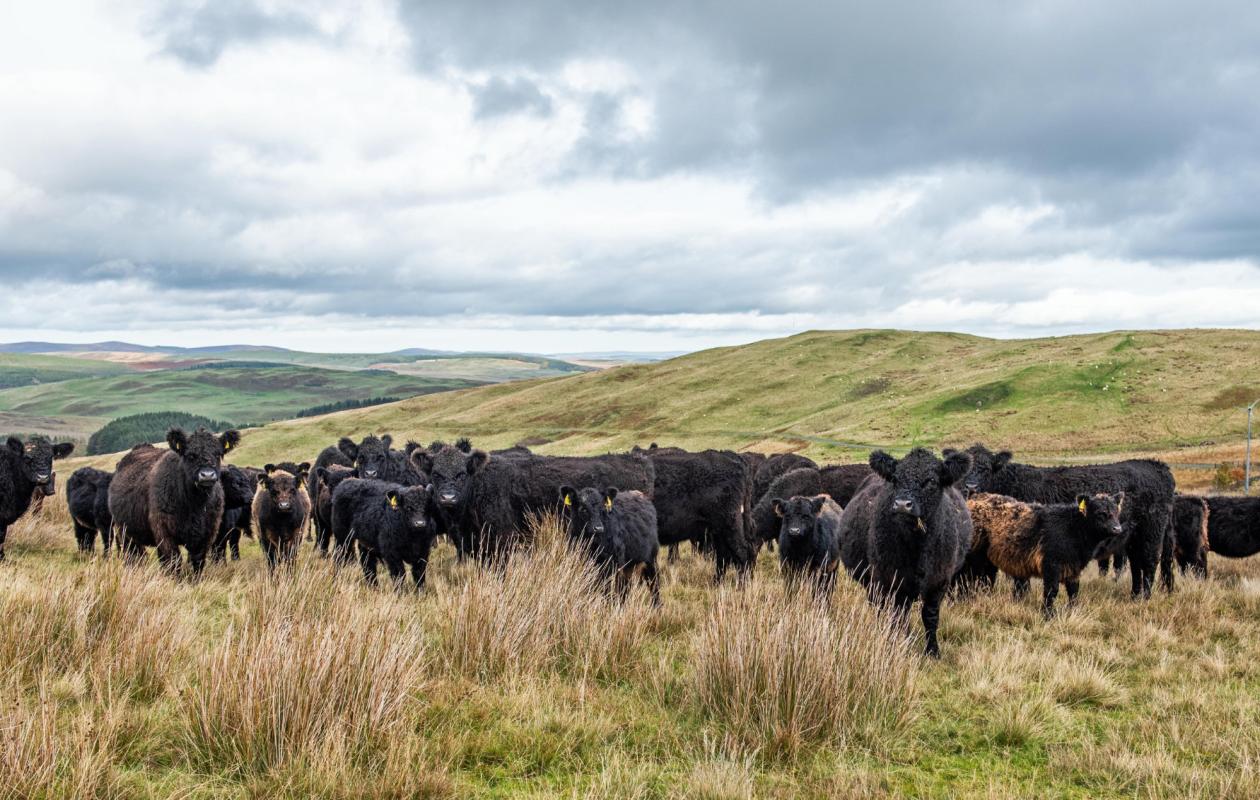
There are 25 of these Shorthorn cross cows retained for own use, that are bulled with a Limousin bull and calves sold store at Harrison & Hetherington, St.Boswells market.
This year 25 autumn calvers which would previously have gone to the Shorthorn bull have been bred pure to capitalise on the increasing demand for Galloway heifers at Castle Douglas, with many buyers from south of the Border using them in environmental grazing schemes.
The autumn calvers have been bred to Kirkstead Vindicator, now nine years old and still breeding well.
Longevity is one of the Galloway’s attributes and Stewart jokes that he was 24 before he was older than the herd’s most senior cow!
All heifers are calved at three years old to give them time to reach maturity - which Stewart says then pays off with the bonus of another five years of productivity during the cow’s lifetime.
All the Galloways calve themselves outside on the hill from the end of March through April which also coincides with lambing. They are running on up to 600 acres so they are given some supplementary feed which helps monitor calving activity.
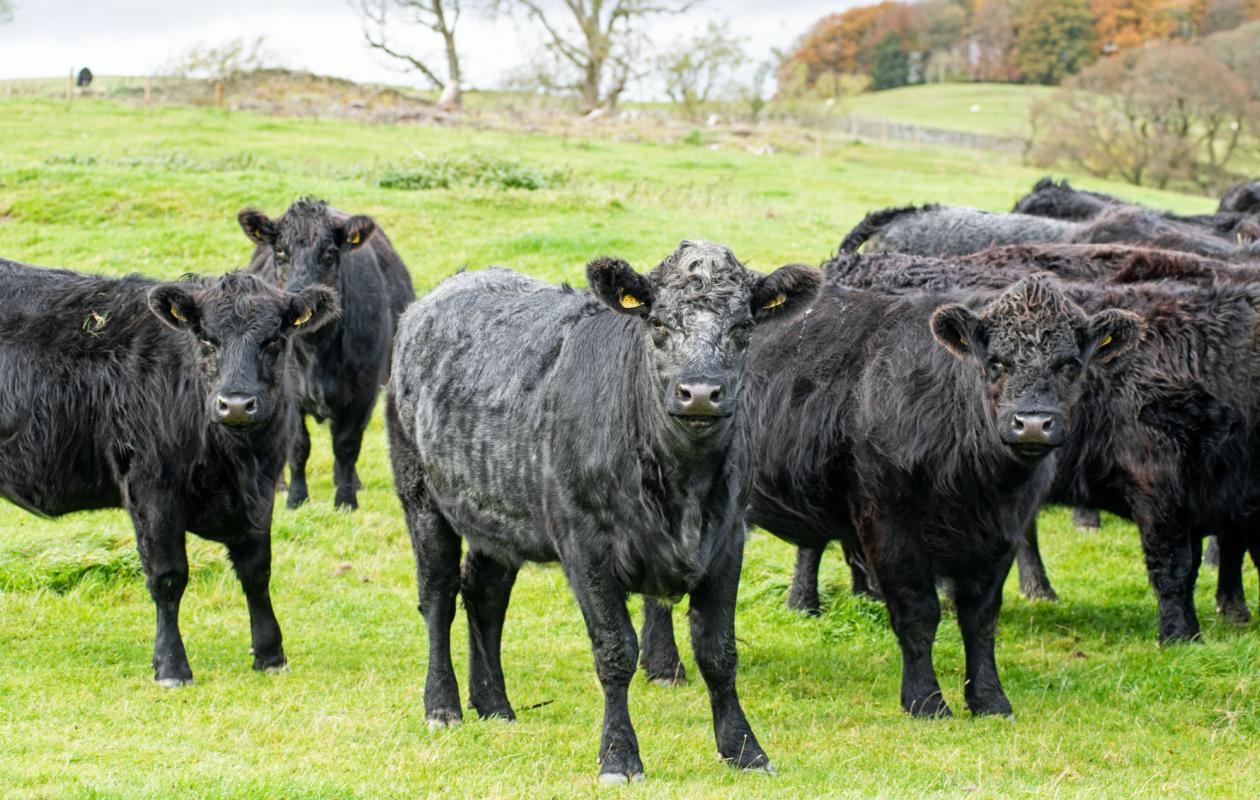
They are brought back to the farm for procedures during the year and when the calves are weaned before they are housed in December.
Housing in three different buildings across the farm can accommodate around 150 head - the weaned calves, finishing cattle and the Shorthorn cross heifers before they are due to calveare housed.
The outwintered cows have until this year been given tubs as supplementary feed and foraged on the rough grazing. However, with the increasing cost of the tubs, the McIntoshes plan to feed suckler cow rolls from the New Year when they are also fed silage.
“While the cows are low input, they have to thrive not just survive. Look after them and they will look after you is our thinking,” said Katherine.
Fertility in the Galloway herd is good with most cows in calf - those that don’t hold get two chances with the bull to keep the calving as tight as possible. Because they are run with the bull on an extensive acreage of hill ground - up to 600 acres - suckler cow rolls are now fed at bulling time which is improving fertility.
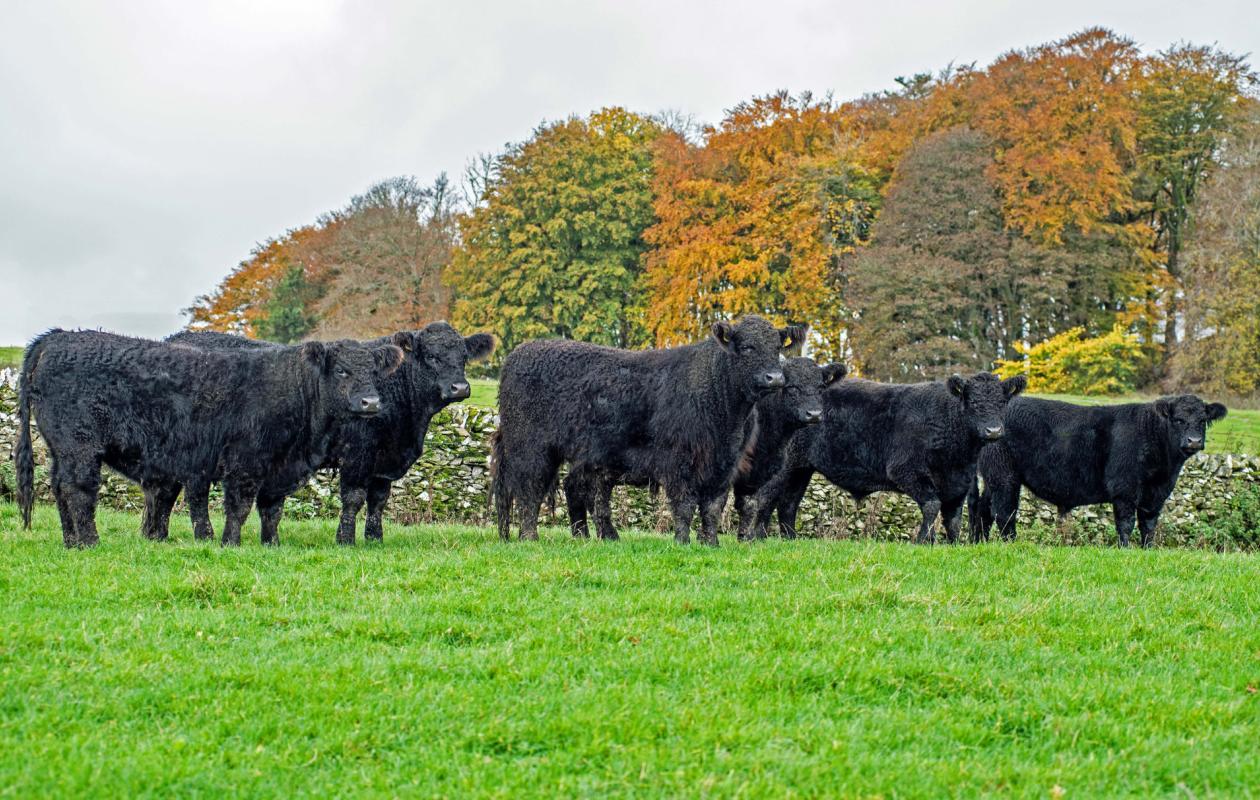
Pure bred Galloway bullocks are being sold for the second winter running to Scotbeef for Aldi as part of a scheme championing Galloway beef started in 2020 with Dorothy Goldie and Scott McKinnon from the society working with the supermarket and local chefs.
The bullocks aged 30 months usually kill out at 380-400 kg and attract a premium through the scheme which the McIntoshs acknowledge is a very good promotion for the breed’s quality beef as well as the cattle’s benefits with conservation grazing and the environment.
The Shorthorn Galloway cross bullocks are sold to Morrisons on the supermarket’s Shorthorn Beef Scheme which markets the branded beef and they attract a premium of 30pp kg.
Such is the success of the Shorthorn Galloway crosses that a small herd of four pedigree Beef Shorthorn cows has been established under the Borthwickwater prefix and the current bull used on the Galloways, Nimrod, is home-bred. The cows have been AI’d this year by Fearn Godfather to calve next summer and the plan is to increase numbers.
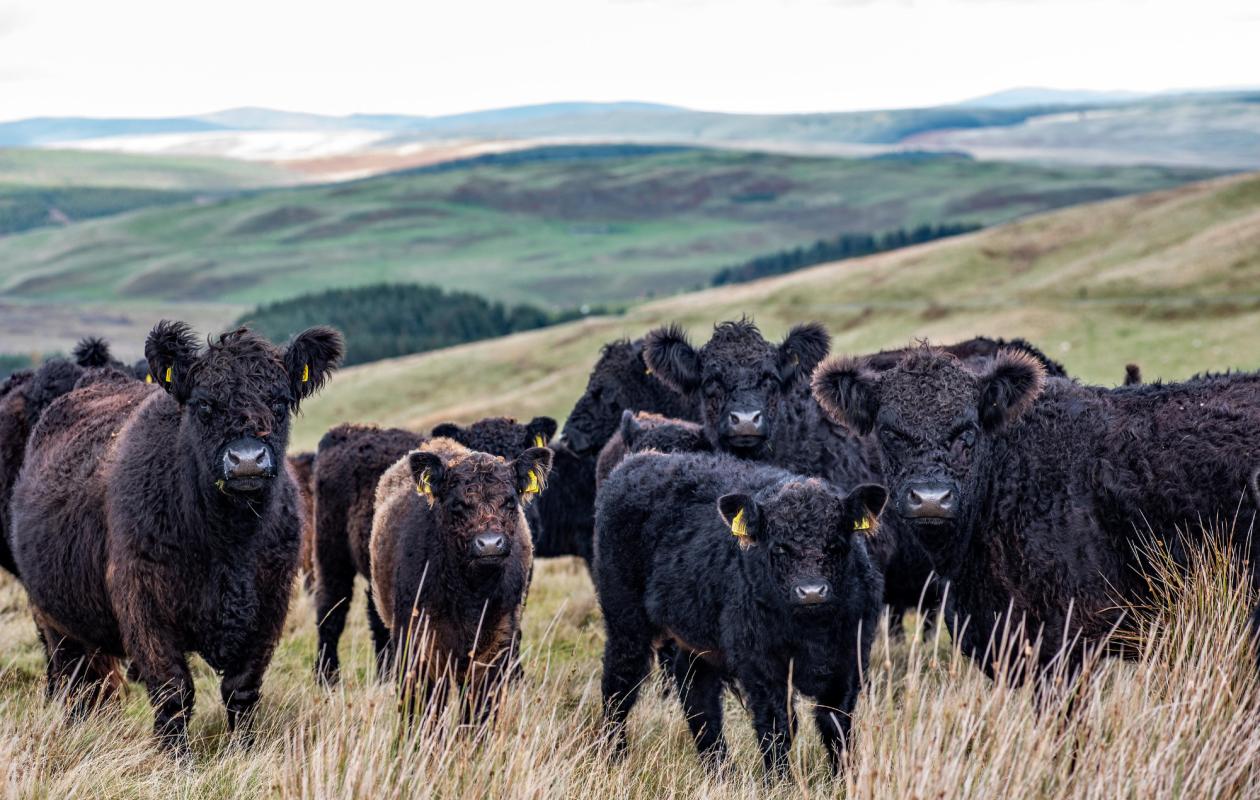
The farm runs 1,800 ewes, split between the Blackfaces and Hill type North Country Cheviots which were taken on with the tenancy at Borthwickshiels.
The two breeds of sheep are a good complement for the farm with the Blackfaces thriving on the heather hill and the Cheviots on the white hill.
The Borthwickshiels Blackfaces are all bred pure while 200 of the Cheviots are crossed with the Bluefaced Leicester to produce Cheviot Mule ewe lambs for sale with the wethers either being finished or sold store.
The ewes are scanned and those carrying twins are spread around the fields before lambing time. Those scanned with single lambs are usually on the hill parks and are turned back to the hill as soon as possible. Lambing, which is all outside, starts on April 1 with the aim of finishing by mid May.
Katherine runs a pedigree flock of 16 Kerry Hill ewes under the Glenhaugh prefix. At the 2022 Kerry Hill Flock Book Society sale in Carlisle a ram sold for 500gns and gimmers made 220gns.
Stewart and Katherine are assisted by two full time members of staff, Graeme Anderson and Lachlan Ferguson.
